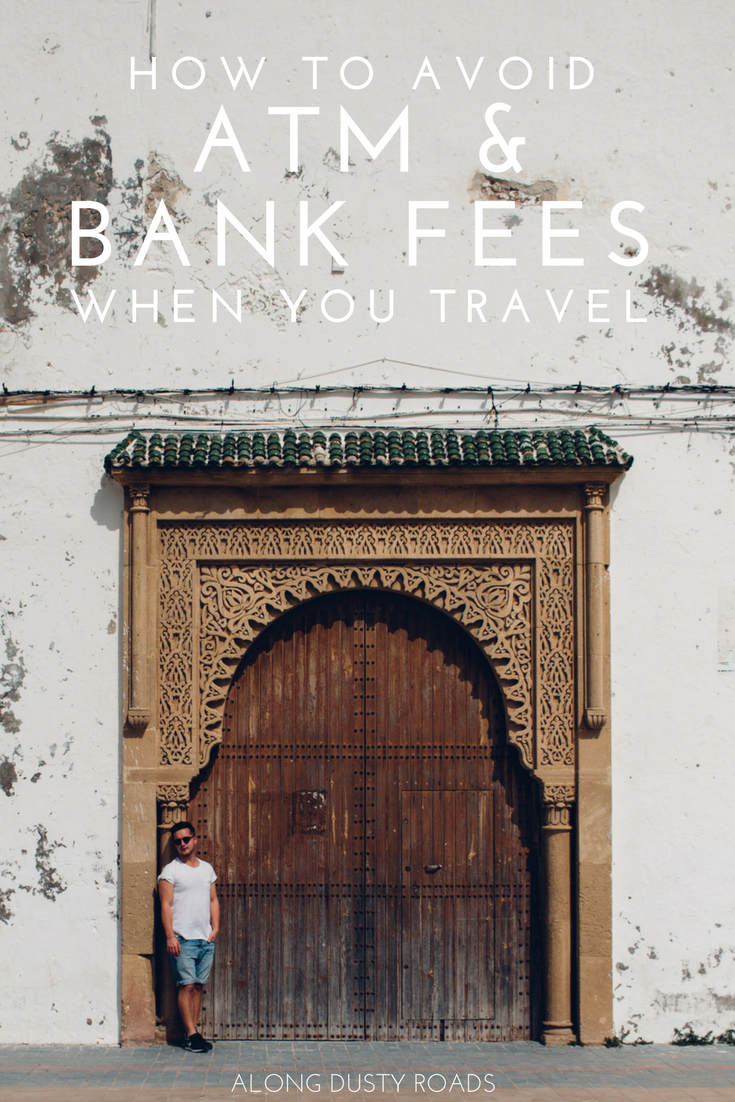ATMs have made things pretty easy for modern day travellers.
In most countries, we no longer have to worry about stuffing a backpack or suitcase with a months' worth of cash, deal with travellers' cheques, or contend with the questionable exchange rates or practices of currency businesses or guys on the street
Using ATMs as our main source of cash when travelling is simply more convenient, more secure, and more reliable. If you’re still doing it the ‘old school’ way of changing all your holiday money at the Post Office or M&S at home, then please stop now!
However, despite the convenience stemming from the ubiquity of cash machines, many people make the same avoidable mistakes when withdrawing cash in a foreign country. These mistakes add inflated fees and significantly increase the amount you lose on the exchange rate.
With our three simple steps to avoiding ATM fees when you travel (including the definitive answer on whether to select ‘local currency’ or not), we’ll show you exactly how to beat the cash machine and keep more of your money for your adventures!
Find the right bank card
Most traditional banks charge you to withdraw your money from a foreign ATM. This will either be a fixed fee per withdrawal, a % of the cash you withdraw, a combination of the two, and sometimes an additional charge depending on whether your bank wants to cover their costs or make money off you.
These fees add up, especially on a long trip, and they also incentivise you to only withdraw larger amounts of cash in each ATM transaction on the road. Neither of these are a good thing for travellers.
In the past, a few banks offered accounts which waived these fees (it’s the only reason Andrew opened his bank account with Nationwide way back when), but the benefit has long been scrapped. Various travel money pre-paid cards took advantage of the gap in the market by offering reduced or zero fees on withdrawals, or only charging customers a small % to upload cash to their account. We depended on a card like this for our two year trip in Latin America, and it definitely saved us cash overall, but we still had to spend hundreds of pounds across the trip to effectively upload and access our own money.
These pre-paid card were only part-way to being a solution, but remain a popular option. Some of them stiff you on the exchange rate tough.
Thankfully, things have HUGELY improved in the last two years in the UK as start-up fintech banks started to offer fantastic, secure user-friendly technology via their apps and no ATM withdrawal fees abroad for customers. They are absolutely perfect for travellers, particularly with their app-based banking technology offering the ability to instantly freeze a lost or stolen card and removing the requirement to notify your bank that you’re going on a trip (which always leads to your bank card being blocked when you need it most!). The main start-up banks best for travellers are:
Starling | The best option in town. Unlimited free ATM withdrawals abroad, with no hidden fees and a great exchange rate. It's quick and free to open an account, with free UK delivery on your card too.
Monzo | They used to offer the same as Starling, but customers are now limited to free ATM withdrawals of up to £200 every 30 days for free. Once that allowance is used up, Monzo charges 3% on withdrawals. It's quick and free to open an account, with free UK delivery on your card too.
Revolut | Our least favourite of the four, but still an excellent option for travellers. Where Starling and Monzo are clear and very user-friendly for travellers, Revolut can be used for a variety of different currencies and so is aimed at different usages. However, it does provide customers with £200 a month in international ATM withdrawals for free. Once that allowance is used up, they charge a 2% fee.
We should also give a shout out to the Halifax Clarity Credit Card which does not charge for ATM withdrawals outside the UK either!
We have accounts with all four of the above so that we have a 'Plan B' on the road if any cards are lost, and will be able to 'spread our free withdrawals around' in case any terms change in the future. Note that none of the above accounts charge for using the credit card to pay bills either, which is great for settling larger expenses and reducing your requirement for carry hard cash on your trip too!
Only use bank-owned ATMs
Once you have your best traveller bank card sorted, the challenge of beating the ATM abroad has only just begun!
Even if your card charges no withdrawal fees, that doesn't mean that the specific ATM won't try to charge you for using it (anybody who has ever been drunk on a night out and short of cash, faced with the dilemma of paying £1.95 at the card machine outside the corner shop, will know this very very well).
This is why we recommend only using a bank-owned ATM for your withdrawals.
With these, you usually stand a much greater chance of avoiding the additional withdrawal fee - a fee which is totally separate to any charged by your own card or bank. This isn't to say that bank-owned cash machines NEVER charge - some of them do - and we have been known to spend far far too long visiting every single bank in a new town in a new country until we found one which was free or charged the smallest withdrawal fee!
Yep, that's how much we hate ATM fees!!!
In our experience, a local national bank (rather than something like HSBC or Santander) is best for not charging ATM usage fees.
The ATMs you should never ever ever use - and we are surprised by how many people don't seem to know this - are the conveniently located non-bank ones owned by private companies like Euronet. On a recent trip to Budapest, we were shocked by how many of these yellow and blue 'independent ATMs' were distributed across the tourist hubs of the city, and incredulous at how many tourists were willingly using them. Regardless of the card you're using, they charge a ridiculous withdrawal fee AND offer a shitty exchange rate - never ever use them unless you're happy throwing money away.
Worryingly, we've noticed that these 'independent' extortionate ATMs are increasingly common in airports and train stations. As they look and act like a normal ATM, they are trading on your convenience and confusion in a new country, but you should avoid them. In most transport hubs, including airports, there is usually a bank-owned ATM which you can use - it just isn't in the most obvious or convenient spot.
These independent ones also try to trick you into withdrawing large amounts of currency by mistake, with the 'standard' withdrawal amounts often multiples of hundreds.
Tip | The easiest way to find a bank-owned ATM? Just search 'ATM' on Google Maps and go to the options listed in or next to a bank building.
“You will lose money on commissions, ATM fees or bad exchange rates at some point on a long trip - the aim is to keep that figure as low as possible!”
Always select the local currency
One final trick that every traveller needs to know about in advance is the currency exchange confusion scam. Unfortunately this is now widespread and used by both bank-owned ATMs and independent ATMs abroad.
But don’t worry - we’ve got your back!
Essentially, once you've put in your pin and selected the amount you wish to withdraw, a final screen will pop up with a lot of text and numbers. It will ask if you wish your withdrawal to be charged in 'local currency' or to be converted and charged in your 'home currency' by the machine at its 'lock in' exchange rate.
Always, always, always choose the local currency.
Choosing the local currency means that your bank account will be charged the correct interbank or MasterCard / Visa exchange rate for that day, or the following day, for the withdrawal. By opting for your 'home currency' however, you are allowing the ATM to provide you with a fixed and false currency exchange rate which is guaranteed to COST YOU MONEY!
For example, withdraw €100 at today's exchange rate and your account will be debited for approximate £86.15. The 'fixed' exchange rate on these ATMs is usually 12-15% worse, so you would end up being charged up to £95+ to receive that same €100. That extra 12-15%? It's going straight to the bank or the ATM owner.
We have stood behind confused travellers at ATMs all over the place, and actually intervened sometimes to stop them pressing the wrong option.
The banks set this up and present it in such a way so as to intentionally confuse you and make you feel like you're getting a better deal by going for a fixed rate.
You are not, it's a scam, and you should always choose to withdraw your money without conversion in the local currency. This applies to card payments in shops, restaurants abroad as well.
Tip | To help avoid all of the above issues, always put the language of the ATM into your native language (most present this option) to avoid further confusion.


















